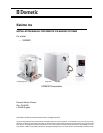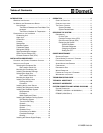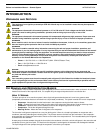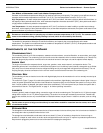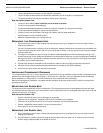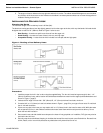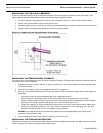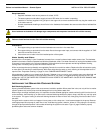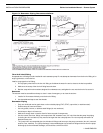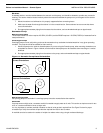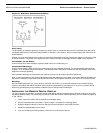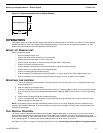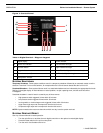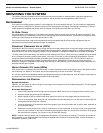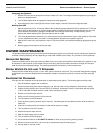
INTRODUCTION Eskimo Ice Installation Manual - Remote System
2 L-2448B ENGLISH
The Effect of Seawater and Fresh Water Temperatures
Seawater and freshwater temperatures affect the ice machine’s efficiency and capacity. The system is most efficient when the
seawater and fresh water temperatures are 55-80°F (13-27°C). The ideal temperature for both is 70°F (21.1°C).
High Temperatures - As water temperatures approach 90°F (32°C) and above, the water’s ability to absorb heat diminishes, so
the capacity of the system decreases. Also, when seawater temperature increases above 90°F (32°C), the system could sustain
a high-pressure shutdown to protect the compressor.
Low Temperatures - As water temperatures approach 40°F (4.4°C) and below, the water’s ability to provide heat exchange
diminishes, so the capacity of the system decreases. Also, as the water temperature decreases, the system could sustain a low-
pressure shutdown to protect the compressor.
The Effect of Ambient Air Temperature
The ambient air temperature affects the ice machine’s efficiency and capacity, but not as significantly as the water
temperatures. The system is most efficient when the ambient air temperature is 55-80°F (13-27°C). At temperatures above and
below this range, ice production will decrease.
COMPONENTS OF THE ICE MAKER
CONDENSING UNIT
The condensing unit has an R-134a compressor, seawater-cooled condenser, a receiver/filter/drier, an accumulator, and a sight
glass/moisture indicator. The condensing unit also has the control box attached, which is remote-mountable up to 7 feet (2.2m)
away with plug-and-play electrical connections for the electrical harness to the auger unit and the optional remote display.
AUGER UNIT
The auger unit contains the evaporator barrel, auger rotor, gearbox, motor, water reservoir, and expansion device. The
freshwater delivered to it is converted to ice which exits the system via an ice-delivery hose routed to a storage box up to 30 feet
(9m) away.The unit comes with quick-connect refrigerant fittings and is pre-charged with refrigerant from the factory. The unit
has plug-and-play electrical connections for the ice-level sensor and the electrical harness to the condensing unit.
CONTROL BOX
The condensing unit has an electrical control box with digital display that can be mounted on the unit or remotely mounted up to
7’ (2.2m) away.
The control box (Figure 7, page 12) contains the system function switches, digital display, and system indicator lights. It lets you
control all system operations and provides visual indications of system activity, such as whether the system is running or has a
fault. If a fault condition is detected, the system shuts down automatically. The control panel lets you restart the system after a
sustained fault. See the “The Digital Control” on page 11 for further operating instructions.
LINESETS
Linesets, generally made of copper tubing, connect the auger unit to the condensing unit. The liquid line is 1/4" (6.4mm) copper
tubing and the suction line is 1/2" (38mm) copper tubing. The suction line comes pre-insulated to prevent frost. Flexible tube
sections are available, but are only recommended for installations where one part moves in relation to another, such as a lifting
deck.
STORAGE BOX
The storage box is the destination point where the ice will accummulate via the ice-delivery hose. An ice-level sensor installed in
the storage box halts ice production when the box is full.
The storage box should be able to hold water and have at least 2" (51mm) of insulation to keep the ice frozen as long as
possible. It is helpful to install a drain in the box at the end opposite from the ice input. To improve ice-production performance,
keep the drain plugged to prevent cold air and cold water from escaping the storage box.
CAUTION
Extreme care should be taken in operating any unit below seawater temperatures of 40°F (4.4°C). The seawater could
freeze in the condenser tubing, possibly causing it to burst, which is not covered by the warranty.
CAUTION
Flexible tubes are prone to fatigue and should only be used where needed for occasional service access, not in areas
of continuous access.



